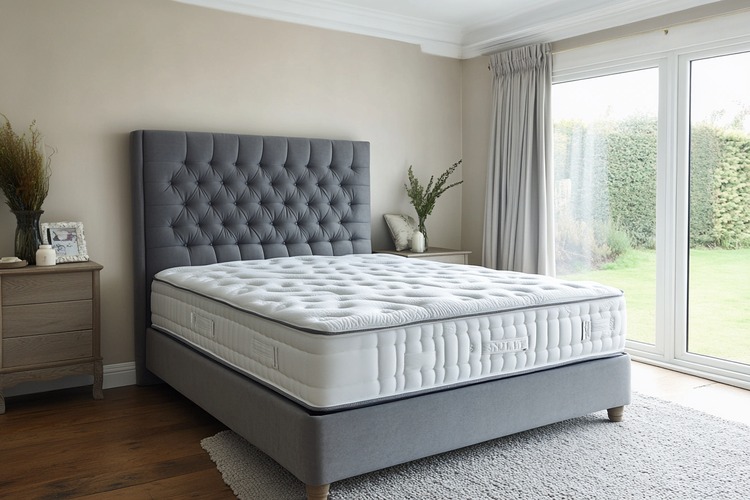Practical Bedroom Remodeling: Design, Furniture, and Decor
A bedroom remodel can transform the most private room in your home into a restful, functional retreat. Thoughtful planning helps balance aesthetics, storage, and comfort while reflecting personal style. Whether you’re refreshing a small city bedroom or overhauling a master suite, focusing on layout, interior design, furniture selection, home decor, and the bed itself creates a cohesive result that improves daily life and long-term value.

Bedroom layout: where to start?
Start a remodel by assessing how you use the bedroom today and how you want to use it after the project. Measure the room, note window and door locations, and identify any structural limitations such as built-in radiators or sloped ceilings. Prioritize circulation—leave clear paths to closets and exits—and plan zones for sleeping, dressing, and working if needed. Good layout planning prevents costly mistakes and ensures the new furniture and fixtures will fit and function as intended.
A simple sketch or a free room-planning app helps visualize placement of larger pieces and lighting. Consider traffic flow with the bed as an anchor, and think about where you want natural light and privacy. Small layout changes, like shifting a closet door or rotating the bed, can make a room feel larger and more balanced.
Interior design: styles and color choices
Interior design choices set the mood of a bedroom. Decide on a style—contemporary, minimalist, Scandinavian, boho, or classic—and pick a cohesive color palette. Soft, muted tones and layered neutrals create calm, while an accent wall or richer hues can add drama without overwhelming the space. Texture matters: mix smooth surfaces with tactile textiles like wool throws, linen curtains, and woven rugs to add depth.
Lighting is a vital part of the interior design plan. Layer ambient, task, and accent lighting to accommodate reading, dressing, and relaxing. Dimmable overhead fixtures, bedside lamps, and wall sconces help create different moods while complementing the chosen style and colors.
Furniture: picking pieces that fit
Choose furniture with scale and storage needs in mind. A too-large dresser or oversized nightstands can crowd the room; conversely, undersized pieces may look out of place. Prioritize multifunctional items—beds with storage drawers, nightstands with shelves, or ottomans that double as seating. Invest in a quality dresser or wardrobe if closet space is limited and consider custom built-ins for awkward alcoves.
Materials and finishes should coordinate with the overall interior design. Lighter woods and slim-profile frames visually open a small bedroom, while richer woods and upholstered pieces convey warmth in larger rooms. Keep the layout flexible so pieces can be rearranged as needs evolve.
Home decor: accents and textiles
Home decor brings personality and comfort to a remodeled bedroom. Layer area rugs, bedding, and throw pillows to create a cozy atmosphere and to define zones. Window treatments serve both function and form—blackout curtains for better sleep, sheer panels for soft daylight. Art, mirrors, and wall shelves personalize the space and reflect light, making the room feel larger and more inviting.
Select decor items deliberately to avoid clutter. A few well-chosen accessories—a statement lamp, curated photographs, or a textured headboard—can have more impact than many small objects. Rotate seasonal textiles to refresh the room without a full remodel.
Bed selection: size, support, and placement
The bed is the focal point of any bedroom remodel. Choose the right mattress size for the room and the sleepers’ comfort needs; a larger mattress improves sleep quality but requires adequate clearance for movement around the bed. Consider mattress type—innerspring, memory foam, hybrid—based on support preferences and durability. The bed frame and headboard should complement your interior design while providing the right height and functionality.
Placement affects both aesthetics and function. Centering the bed on a main wall with nightstands creates symmetry, while a floating placement can open space for built-ins or reading nooks. Don’t overlook mattress support and a proper foundation to maximize lifespan and comfort.
Conclusion
A successful bedroom remodeling project blends practical layout decisions, considered interior design, appropriately scaled furniture, thoughtful home decor, and a carefully chosen bed. Planning with measurements and priorities in mind, layering lighting and textiles, and selecting durable, stylish pieces will create a tranquil, functional bedroom that reflects your needs and style.






